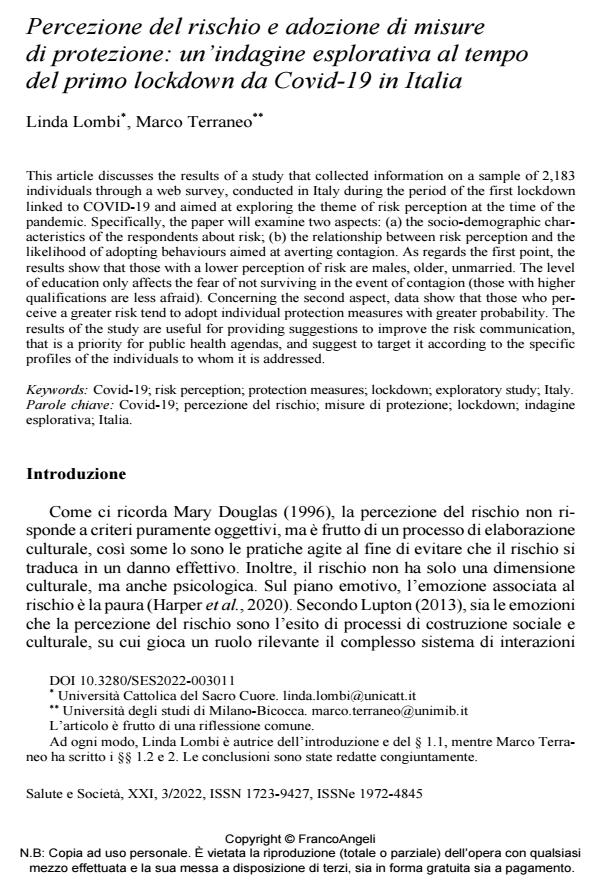Percezione del rischio e adozione di misure di protezione: un’indagine esplorativa al tempo del primo lockdown da Covid-19 in Italia
Journal title SALUTE E SOCIETÀ
Author/s Linda Lombi, Marco Terraneo
Publishing Year 2022 Issue 2022/3
Language Italian Pages 16 P. 154-169 File size 239 KB
DOI 10.3280/SES2022-003011
DOI is like a bar code for intellectual property: to have more infomation
click here
Below, you can see the article first page
If you want to buy this article in PDF format, you can do it, following the instructions to buy download credits

FrancoAngeli is member of Publishers International Linking Association, Inc (PILA), a not-for-profit association which run the CrossRef service enabling links to and from online scholarly content.
This article discusses the results of a study that collected information on a sample of 2,183 individuals through a web survey, conducted in Italy during the period of the first lockdown linked to COVID-19 and aimed at exploring the theme of risk perception at the time of the pandemic. Specifically, the paper will examine two aspects: (a) the socio-demographic charac-teristics of the respondents about risk; (b) the relationship between risk perception and the likelihood of adopting behaviours aimed at averting contagion.As regards the first point, the results show that those with a lower perception of risk are males, older, unmarried. The level of education only affects the fear of not surviving in the event of contagion (those with higher qualifications are less afraid). Concerning the second aspect, data show that those who per-ceive a greater risk tend to adopt individual protection measures with greater probability. The results of the study are useful for providing suggestions to improve the risk communication, that is a priority for public health agendas, and suggest to target it according to the specific profiles of the individuals to whom it is addressed.
Keywords: Covid-19; risk perception; protection measures; lockdown; exploratory study; Italy.
Linda Lombi, Marco Terraneo, Percezione del rischio e adozione di misure di protezione: un’indagine esplorativa al tempo del primo lockdown da Covid-19 in Italia in "SALUTE E SOCIETÀ" 3/2022, pp 154-169, DOI: 10.3280/SES2022-003011